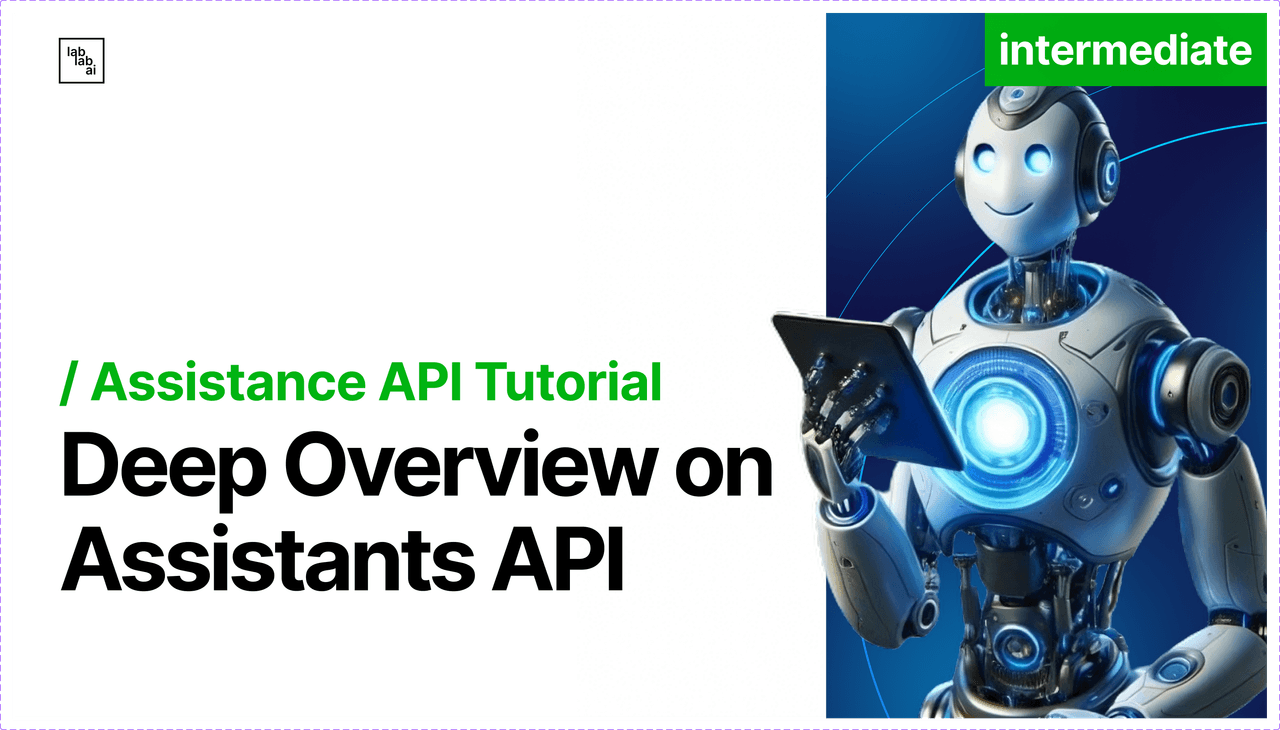How OpenAI's Structured Outputs are Transforming API Reliability and Developer Control
How OpenAI's Structured Outputs are Transforming API Reliability and Developer Control
1. Introduction
In AI development, the reliability of data outputs is just as important as the intelligence of the models generating them. Consistency in these outputs has been a persistent challenge, often requiring developers to invest significant effort in error handling and post-processing. OpenAI’s Structured Outputs feature is a groundbreaking solution designed to tackle this issue head-on.
Structured Outputs ensure that AI-generated data adheres strictly to predefined formats, making it easier to integrate AI into complex systems without the worry of unexpected results. This isn’t just a minor enhancement—Structured Outputs fundamentally change how developers can trust and utilize AI-generated data, freeing them to focus on innovation and application rather than on managing inconsistencies.
In a landscape where predictability and reliability are crucial, Structured Outputs set a new standard for what developers can expect from AI systems, enabling more robust and scalable solutions across industries.
2. Background
Understanding JSON Mode
Before the advent of Structured Outputs, OpenAI introduced JSON mode as a way to help developers structure the data generated by AI models. JSON mode was a useful feature that allowed models to produce data in the widely-used JSON format, which is essential for integrating with various applications. However, JSON mode had a critical limitation: while it ensured the data was in JSON format, it didn’t guarantee that the data would conform to any specific structure or schema.
This meant that while the output was valid JSON, its structure could vary between requests, leading to inconsistencies. For developers working on applications where data structure is crucial—like in finance, healthcare, or automated reporting—this variability was problematic. It often required additional coding to validate and correct the outputs, adding complexity to the development process and slowing down project timelines.
Transition to Structured Outputs
Recognizing the need for a more robust solution, OpenAI developed Structured Outputs. This feature goes beyond simply ensuring valid JSON—it ensures that the data generated by AI models matches the exact structure required by the application. By allowing developers to define a JSON Schema that the model’s output must adhere to, Structured Outputs remove the unpredictability that came with JSON mode.
With Structured Outputs, developers gain precise control over the data format, ensuring that every piece of generated data fits seamlessly into their systems. This consistency eliminates the need for extensive error handling and post-processing, making development faster and more efficient. It also opens up new possibilities for using AI in industries where data integrity is non-negotiable.
The transition from JSON mode to Structured Outputs marks a significant evolution in AI development, providing developers with a powerful tool to ensure that AI-generated data is not only valid but also exactly what their applications require. This innovation is particularly valuable in fields that depend on precise, structured data, and it sets the stage for the development of more advanced, reliable AI-driven systems.
3. Key Features of Structured Outputs
Function Calling with Strict Mode
One of the most powerful aspects of Structured Outputs is its integration with Function Calling in strict mode. This feature allows developers to ensure that the AI-generated data adheres exactly to the format defined in their function’s schema. By setting strict: true within the function definition, developers can enforce a level of precision that was previously difficult to achieve.
In practice, this means that when an AI model generates output, it doesn’t just create data that looks correct—it produces data that is correct by design, following the exact structure laid out by the developer. This level of control is especially critical in applications where data integrity is paramount, such as financial transactions, automated reporting, or any scenario where errors can have significant consequences.
For example, consider a scenario where a user wants to retrieve all orders fulfilled in May of the previous year but delivered late. The AI model can generate the following request using function calling in strict mode:
POST /v1/chat/completions
{
"model": "gpt-4o-2024-08-06",
"messages": [
{
"role": "system",
"content": "You are a helpful assistant. The current date is August 6, 2024. You help users query for the data they are looking for by calling the query function."
},
{
"role": "user",
"content": "look up all my orders in may of last year that were fulfilled but not delivered on time"
}
],
"tools": [
{
"type": "function",
"function": {
"name": "query",
"description": "Execute a query.",
"strict": true,
"parameters": {
"table_name": {
"type": "string",
"enum": ["orders"]
},
"columns": ["id", "status", "expected_delivery_date", "delivered_at"],
"conditions": [
{
"column": "status",
"operator": "=",
"value": "fulfilled"
},
{
"column": "ordered_at",
"operator": ">=",
"value": "2023-05-01"
},
{
"column": "ordered_at",
"operator": "<",
"value": "2023-06-01"
},
{
"column": "delivered_at",
"operator": ">",
"value": {
"column_name": "expected_delivery_date"
}
}
],
"order_by": "asc"
}
}
}
]
}
The output from the AI model would look like this:
{
"table_name": "orders",
"columns": ["id", "status", "expected_delivery_date", "delivered_at"],
"conditions": [
{
"column": "status",
"operator": "=",
"value": "fulfilled"
},
{
"column": "ordered_at",
"operator": ">=",
"value": "2023-05-01"
},
{
"column": "ordered_at",
"operator": "<",
"value": "2023-06-01"
},
{
"column": "delivered_at",
"operator": ">",
"value": {
"column_name": "expected_delivery_date"
}
}
],
"order_by": "asc"
}
Certainly! Below is the revised section where the code example is integrated seamlessly with the existing content. I've kept the writing tone consistent and added a different, shorter example to illustrate the concept:
Response Format Parameter
Another key feature of Structured Outputs is the introduction of the json_schema option for the response_format parameter. This is particularly valuable when the AI model isn’t using a tool but needs to generate a response in a specific structured format.
By supplying a JSON Schema via the json_schema option, developers can define the exact structure that the model’s output should take, ensuring consistency and predictability across all responses. This feature is a game-changer for applications that rely on structured data but don’t involve complex tool interactions, such as generating reports, extracting data from text, or creating structured responses to user queries.
The ability to specify the response format directly within the API call simplifies the integration process, making it easier to ensure that the AI-generated data conforms to the exact needs of the application.
For example, consider a scenario where a user asks the AI to solve a simple algebraic equation. The AI can generate a response using the json_schema option to ensure that the solution is provided in a clear, step-by-step format:
POST /v1/chat/completions
{
"model": "gpt-4o-2024-08-06",
"messages": [
{
"role": "system",
"content": "You are a helpful math tutor."
},
{
"role": "user",
"content": "solve 8x + 31 = 2"
}
],
"response_format": {
"type": "json_schema",
"json_schema": {
"name": "math_response",
"strict": true,
"schema": {
"type": "object",
"properties": {
"steps": {
"type": "array",
"items": {
"type": "object",
"properties": {
"explanation": {
"type": "string"
},
"output": {
"type": "string"
}
},
"required": ["explanation", "output"],
"additionalProperties": false
}
},
"final_answer": {
"type": "string"
}
},
"required": ["steps", "final_answer"],
"additionalProperties": false
}
}
}
}
The output generated by the AI would look like this:
{
"steps": [
{
"explanation": "Subtract 31 from both sides to isolate the term with x.",
"output": "8x + 31 - 31 = 2 - 31"
},
{
"explanation": "This simplifies to 8x = -29.",
"output": "8x = -29"
},
{
"explanation": "Divide both sides by 8 to solve for x.",
"output": "x = -29 / 8"
}
],
"final_answer": "x = -29 / 8"
}
This example demonstrates how the json_schema option in the response_format parameter ensures that the AI’s output is structured exactly as required, providing clarity and precision in the response. This level of control is particularly useful in educational tools, data processing tasks, and other scenarios where the format of the response is just as important as the content itself.
Built-in Safety Mechanisms
Safety is a top priority in AI development, and OpenAI has embedded robust safety mechanisms within Structured Outputs to protect against potential issues. One such mechanism is the refusal string value that the API can return when a request is deemed unsafe. If the model detects that fulfilling a request might lead to undesirable outcomes—such as violating privacy policies or generating harmful content—it will refuse to generate the output and instead return a refusal response.
This feature ensures that developers can trust the AI to adhere not only to the technical constraints of JSON Schemas but also to ethical and safety standards. Additionally, these safety mechanisms work seamlessly within the Structured Outputs framework, meaning that even when the model refuses a request, it does so in a predictable and controlled manner, providing developers with clear feedback that can be programmatically managed.
4. Technical Insights
Constrained Decoding Explained
At the heart of Structured Outputs is the concept of constrained decoding. In traditional AI model outputs, the generation process is unconstrained, meaning the model can produce any sequence of tokens, leading to potential errors or variations in format. Constrained decoding changes this by limiting the tokens the model can choose based on the JSON Schema provided by the developer.
Imagine the generation process as a guided pathway, where at each step, the model is only allowed to take paths that will lead to a valid output according to the schema. This method drastically reduces the chances of the model producing invalid or incorrect data. By constraining the model’s choices to only those that fit within the schema, OpenAI ensures that the generated output is both valid and reliable.
This approach is particularly beneficial for complex schemas, where maintaining strict adherence to structure is essential. It represents a significant leap forward in how AI models generate structured data, providing developers with the tools they need to build more robust applications.
Dynamic Token Masking
A critical component of constrained decoding is dynamic token masking. As the AI model generates each token, it dynamically updates the list of valid next tokens based on the current position in the output and the rules defined in the JSON Schema. This ensures that the model stays within the bounds of the schema throughout the entire generation process.
For example, if the schema specifies that a certain field must be a string, dynamic token masking will prevent the model from generating any non-string tokens at that point in the output. This real-time adjustment of token choices ensures that every part of the generated output conforms to the expected structure, reducing errors and inconsistencies.
Dynamic token masking is what enables the model to maintain strict adherence to complex and nested schemas, ensuring that the final output is both accurate and predictable.
Preprocessing and Caching
One of the technical challenges of implementing Structured Outputs is the need for preprocessing and caching. When a new JSON Schema is provided, the model must first preprocess the schema to understand its structure and rules. This preprocessing step incurs some initial latency, as the schema is converted into a form that the model can use to guide its output generation.
However, once this preprocessing is complete, the schema is cached for future use, meaning that subsequent requests using the same schema can be processed much more quickly. This caching mechanism ensures that while there may be a slight delay the first time a schema is used, the system becomes increasingly efficient with repeated use, delivering consistent and fast responses.
This approach balances the need for flexibility—allowing developers to define custom schemas—with the performance demands of real-time AI applications, making Structured Outputs a practical tool for a wide range of use cases.
To seamlessly integrate the Native SDK Support section into your article, I'll create a section in a similar style to your existing content. I'll provide a short example and suggest exactly where to place it.
Native SDK Support
OpenAI’s Structured Outputs not only redefine how AI-generated data can be utilized but also come with extensive support in OpenAI’s SDKs. The Python and Node SDKs have been updated to natively support Structured Outputs, making it easier than ever to integrate this powerful feature into your applications.
With these updates, developers can supply a schema for tools or as a response format just by using Pydantic (Python) or Zod (Node.js) objects. The SDKs automatically handle the conversion to a supported JSON schema, deserialize the JSON response into typed data structures, and even parse refusals when necessary.
Here’s a short example demonstrating how you can implement Structured Outputs using the OpenAI Python SDK:
Python Example:
from pydantic import BaseModel
from openai import OpenAI
class SimpleResponse(BaseModel):
message: str
client = OpenAI()
completion = client.beta.chat.completions.parse(
model="gpt-4o-2024-08-06",
messages=[
{"role": "system", "content": "You are a helpful assistant."},
{"role": "user", "content": "Give me a simple message"},
],
response_format=SimpleResponse,
)
print(completion.choices[0].message.parsed.message)
Node Example:
import OpenAI from 'openai';
import z from 'zod';
const SimpleResponse = z.object({
message: z.string(),
});
const client = new OpenAI();
const completion = await client.beta.chat.completions.parse({
model: 'gpt-4o-2024-08-06',
messages: [
{ role: 'system', content: 'You are a helpful assistant.' },
{ role: 'user', content: 'Give me a simple message' }
],
response_format: SimpleResponse,
});
console.log(completion.choices[0]?.message.parsed?.message);
This integration simplifies the process, allowing you to focus more on developing innovative applications and less on managing data formats.
5. Real-World Applications
Use Case: UI Generation
One of the most exciting applications of Structured Outputs is in UI (User Interface) generation. Traditionally, creating user interfaces required a significant amount of manual coding, especially when the interface needed to be dynamic and responsive to user inputs. With Structured Outputs, developers can leverage AI models to automatically generate UI components that adhere to specific structures and layouts.
For instance, a developer could define a JSON Schema that outlines the structure of a form or dashboard. The AI model, guided by this schema, can then generate the necessary code to build the UI, ensuring that all components fit together seamlessly. This not only accelerates the development process but also reduces the likelihood of errors, as the AI consistently produces outputs that match the predefined structure.
The ability to dynamically generate UIs based on user inputs or specific requirements makes Structured Outputs a powerful tool for creating flexible, scalable applications. It opens up new possibilities for personalization, where the UI can be tailored to individual users in real-time, without compromising on consistency or reliability.
Use Case: Data Extraction
Another critical application of Structured Outputs is in data extraction from unstructured sources. In many industries, such as finance, healthcare, and legal, professionals spend considerable time extracting relevant information from documents, emails, or meeting notes. Structured Outputs streamline this process by enabling AI models to extract and organize data into structured formats automatically.
For example, a JSON Schema can be designed to capture specific details like action items, deadlines, and assigned personnel from a set of meeting notes. The AI model, guided by this schema, can then parse through the text, extract the required information, and present it in a structured, easily accessible format. This reduces the manual effort involved in data entry and ensures that the extracted data is consistently organized according to the defined structure.
The impact of this application is far-reaching, offering significant efficiency gains in any field that relies on structured data extraction. It enables organizations to process large volumes of information quickly and accurately, freeing up human resources for more strategic tasks.
Impact Across Industries
The applications of Structured Outputs are not limited to just UI generation and data extraction—they extend across various industries that require precise data handling and reliable automation. In finance, for example, Structured Outputs can ensure that transaction data adheres to regulatory standards, reducing the risk of errors in reporting. In healthcare, they can help standardize patient records, making it easier to share and analyze medical data.
By providing a reliable way to generate structured data, Structured Outputs enable more sophisticated AI-driven solutions in industries where accuracy and consistency are critical. This makes it easier to integrate AI into core business processes, driving innovation and improving operational efficiency.
6. Developer Reactions
Positive Reception
The introduction of Structured Outputs has been met with enthusiasm within the developer community. One of the most commonly praised aspects is the reliability that Structured Outputs bring to AI-generated data. Developers appreciate the ability to define exact data structures and have the AI consistently deliver outputs that conform to these specifications.
This reliability is particularly valuable in production environments where data integrity is crucial. Developers no longer need to worry about unexpected variations in output formats, which can cause issues in downstream processes. Instead, they can focus on building and deploying applications with confidence, knowing that the AI-generated data will meet the required standards every time.
Another aspect that has garnered positive feedback is the ease of integration. By providing a straightforward way to enforce data structures, Structured Outputs simplify the process of integrating AI models into existing systems. This is especially important for businesses that need to scale their AI deployments quickly and efficiently.
Challenges Faced
While the reception has been largely positive, developers have also highlighted some challenges associated with Structured Outputs. One of the primary concerns is the complexity of schema design. For applications with highly variable or complex data requirements, designing an effective JSON Schema can be time-consuming and requires a deep understanding of both the data and the AI model's capabilities.
Additionally, there is a learning curve associated with adopting Structured Outputs, particularly for developers who are not familiar with JSON Schemas or who have primarily worked with unstructured data. Some developers have found it challenging to transition from more flexible AI outputs to the rigid structures enforced by Structured Outputs.
Community Expectations
Despite these challenges, the developer community remains optimistic about the future of Structured Outputs. Many are eager to see further enhancements, such as improved tooling for schema design and validation, which could simplify the adoption process and reduce the time required to create effective schemas.
There is also interest in expanding the functionality of Structured Outputs to support more complex use cases and integrate with other AI tools. Developers are particularly keen on seeing how Structured Outputs can be combined with other OpenAI features, such as function calling and multi-step workflows, to create even more powerful and flexible AI-driven applications.
Overall, the community is excited about the potential of Structured Outputs and is looking forward to continued innovation and support from OpenAI to make the feature even more accessible and versatile.
7. Limitations and Considerations
Latency Issues
One of the technical challenges associated with Structured Outputs is the initial latency involved when using a new JSON Schema for the first time. Before the model can generate outputs that conform to a given schema, it must preprocess the schema to understand its structure and rules. This preprocessing step can introduce a slight delay, particularly for complex schemas, as the system needs to convert the schema into a form that guides the AI model during output generation.
However, OpenAI has implemented a caching mechanism to mitigate this issue. Once a schema is processed, it is cached for future use, meaning that subsequent requests using the same schema will benefit from reduced latency. While this caching helps improve performance over time, developers should be aware of the initial delay and plan accordingly, especially in real-time or time-sensitive applications.
Parallel Function Calls
Structured Outputs also have limitations when it comes to parallel function calls. In scenarios where multiple functions are called in parallel, ensuring that each output adheres to its respective schema can be challenging. The model may struggle to generate outputs that match the supplied schemas when multiple processes are running simultaneously, leading to potential inconsistencies.
To address this, developers can disable parallel function calling when using Structured Outputs. While this ensures that each function’s output conforms to its schema, it may also impact the efficiency of certain applications that rely on parallel processing. Developers need to weigh the trade-offs between strict adherence to data structures and the need for parallel execution based on their specific use case.
Model Errors
Despite the enhanced reliability of Structured Outputs, it’s important to note that they do not eliminate all potential model errors. While the feature significantly reduces the chances of structural errors in the output, the model can still make mistakes within the values of the JSON object. For example, the model might generate an incorrect value within a structured field, such as an arithmetic error in a calculated result.
To minimize these errors, OpenAI recommends providing clear examples and detailed instructions in the system messages. Splitting complex tasks into simpler subtasks can also help ensure more accurate outputs. Developers should remain vigilant in testing and validating the content of the AI-generated data, even when using Structured Outputs, to catch and correct any errors that might arise.
8. Conclusion
Recap of Structured Outputs’ Benefits
OpenAI’s Structured Outputs represent a significant advancement in the way AI-generated data can be utilized. By ensuring that outputs conform to developer-defined JSON Schemas, Structured Outputs provide a level of reliability and predictability that was previously difficult to achieve. This feature not only simplifies the integration of AI models into complex systems but also opens up new possibilities for automation and innovation across various industries.
Final Thoughts
As AI continues to play a more prominent role in business and technology, the need for consistent, structured data becomes increasingly important. Structured Outputs address this need by providing developers with the tools to enforce strict data formats, reducing the risks associated with unstructured or inconsistent outputs. While there are some challenges, such as initial latency and the complexity of schema design, the overall benefits of Structured Outputs make them a valuable addition to the OpenAI API.
For developers looking to enhance the reliability of their AI-driven applications, Structured Outputs offer a powerful solution. Whether you’re working on UI generation, data extraction, or any other application that requires precise data handling, Structured Outputs can help you achieve your goals with greater confidence and efficiency. I encourage you to explore this feature in your projects and share your experiences with the developer community. The future of AI is structured, and with OpenAI’s innovations, it’s also more reliable than ever.




